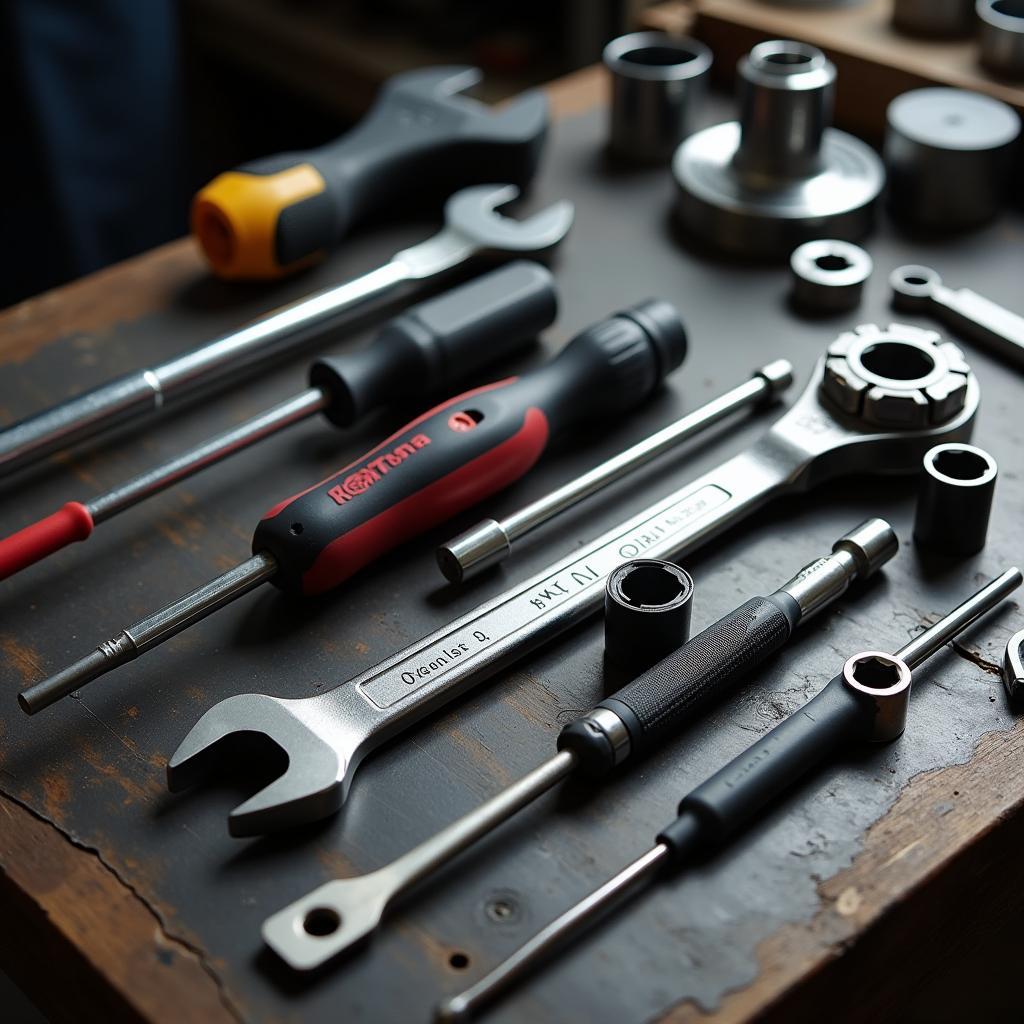Thinking about rolling up your sleeves and tackling your next car service yourself? You’re not alone. With a bit of know-how and the right tools, many car owners find DIY car maintenance rewarding and cost-effective. However, before you dive under the hood, it’s crucial to understand what’s involved and decide if it’s the right choice for you.
Assessing Your DIY Service Capabilities
While the idea of saving money and learning about your car might sound appealing, DIY car service isn’t for everyone. Here’s what to consider:
- Your Skill Level: Are you comfortable with basic mechanics? Do you know how to change a tire or check your oil? DIY car service often requires a certain level of mechanical aptitude.
- Complexity of the Service: Some tasks, like changing the oil or replacing air filters, are relatively simple. Others, like brake repairs or transmission work, are best left to professionals.
- Tools and Space: Do you have the necessary tools and a safe, well-lit space to work?
- Time Commitment: Be realistic about the time involved. Even simple tasks can take longer than expected, especially for beginners.
DIY Car Service Tasks for Beginners
If you’re new to DIY car maintenance, here are some basic tasks you can start with:
- Checking and Topping Up Fluids: Learn how to check and top up essential fluids like engine oil, coolant, brake fluid, power steering fluid, and windshield washer fluid.
- Changing the Air Filter: Replacing your car’s air filter is a straightforward process that can improve engine performance and fuel efficiency.
- Replacing Windshield Wipers: Worn-out wipers can significantly reduce visibility, especially in rain or snow. Replacing them is a quick and easy DIY task.
- Changing a Flat Tire: Knowing how to change a flat tire is an essential skill for all drivers. Make sure you have a spare tire, jack, and lug wrench in your car and know how to use them.
- Jump-Starting a Car: Learning how to jump-start a car with a dead battery can come in handy in emergency situations.
Benefits of DIY Car Service
- Cost Savings: DIY car service can save you money on labor costs charged by professional mechanics.
- Increased Knowledge: Working on your car gives you a better understanding of how it operates.
- Sense of Accomplishment: Completing a car service yourself can be a rewarding experience.
“As a mechanic, I encourage car owners to learn basic maintenance,” says John Smith, a certified automotive technician with over 20 years of experience. “However, safety should always come first. If you’re unsure about a task, it’s best to consult a professional.”
When to Seek Professional Car Service
While DIY car service can be beneficial, some tasks are better left to trained professionals. These include:
- Complex Repairs: Repairs involving the engine, transmission, brakes, or electrical system require specialized knowledge and tools.
- Safety-Critical Systems: Any work on safety-critical systems like brakes, airbags, or steering should only be performed by qualified mechanics.
- Warranty Considerations: Performing your own repairs may void your car’s warranty. Check your warranty terms before attempting any DIY work.
DIY Car Service: Proceed with Caution
DIY car service can be a great way to save money and learn about your vehicle. However, it’s important to approach it with caution and awareness of your limitations. Always prioritize safety, consult your owner’s manual, and don’t hesitate to seek professional help when needed.
If you’re interested in learning more about specific car maintenance tasks or need help finding a reliable car service provider, check out our other helpful resources:
- What happens if car is not serviced
- What is oil service for car
- What is done in service of hyundai car ac
- What they do in car service
- How much maruti car service costs
Remember, taking care of your car, whether through DIY maintenance or professional service, ensures its longevity, performance, and your safety on the road.


